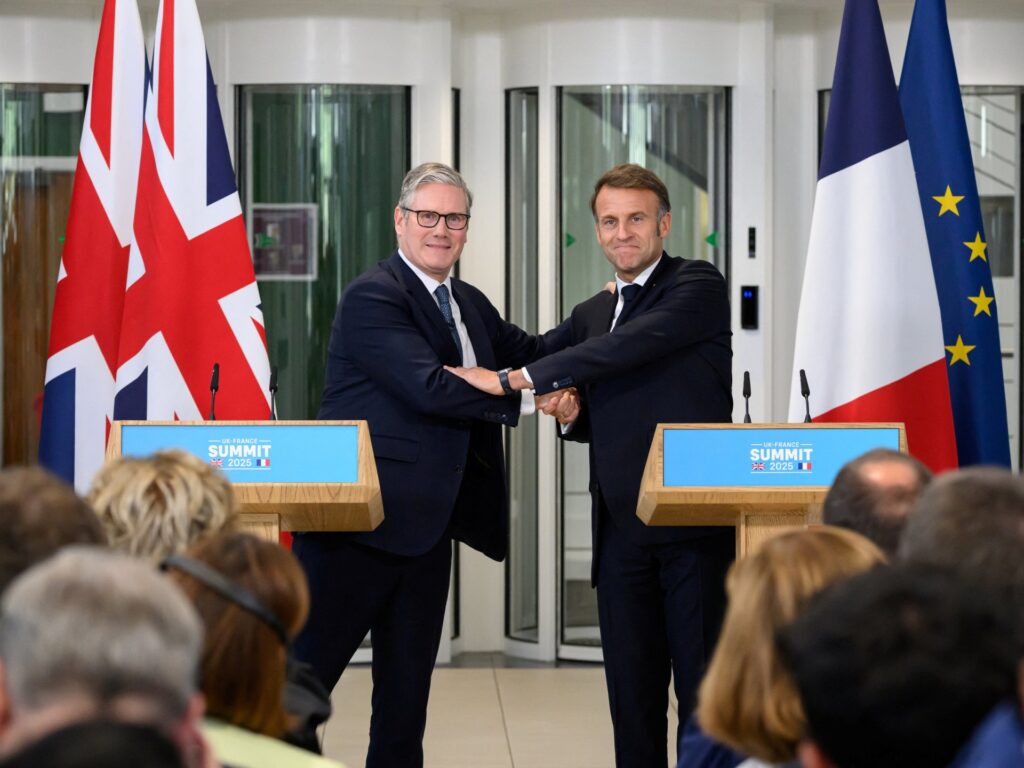On July 10, Thanos Plevris, the Greek minister for migration, announced new legislation that would effectively deny asylum to those who reach the Greek shores following a treacherous journey through the Mediterranean from Africa. “Greece will not tolerate the uncontrolled entry of thousands of irregular migrants from North Africa,” Plevris said during an interview. Reactions against Greece’s new legislation were immediate: Human rights organisations described it as illegal and called for its withdrawal. The Plenary of Greek Bar Associations emphasised that denying the right to asylum is a violation of international and EU legislation.
On the same day, but on the other side of the continent, British Prime Minister Keir Starmer outlined a “ground-breaking deal” with France, which he said would target small boats and smuggling gangs and send “a clear message that these life-threatening journeys are pointless”. The UK-France deal has been criticised by all sides of the political spectrum. Organisations such as Doctors Without Borders called it “reckless”, “ill-fated” and “dangerous”, while the Migrants’ Rights Network emphasised that the new agreement will not prevent people from trying to cross to the UK.
Greece and the UK’s new plans to curb migration are set to fail, and the reason is simple: migration deterrence does not work.
A decade ago, in the summer of 2015, the European Union faced a crisis it did not expect and for which it had not prepared. The rise of the Islamic State of Iraq and the Levant (ISIL, also known as ISIS), Syria’s brutal civil war and instability in Afghanistan led thousands of people to seek safety and security in the European Union. The “long summer of migration” marked the beginning of the so-called refugee crisis in the EU. Yet the EU did not have a clear plan; the European Agenda for Migration, which had been agreed upon in May 2015, had not yet been tested.
Today, the narrative of a crisis continues to shape migration policy across Europe. In Greece, it has served to justify restrictive deterrence measures since 2015, making new crackdowns unsurprising. For Greece’s neoliberal government, migration is a blemish on the narrative of its economic success. In the UK, it is used to fuel far-right sentiment. In both cases, migration policy is crafted not only to deter arrivals but also to satisfy domestic political demands.
Neither migration plan should be viewed in isolation from the rise of the far right across the continent. The adoption of far-right rhetoric surrounding the illegalisation of migrants has been used in both countries to justify inhumane policies. The justification for Greece’s new policy centres on a questionable narrative of an “invasion” from Africa – a trope the Migration Minister has invoked repeatedly. For Greece’s minister of migration, the Greek border, and by extension the European border, must be reinforced so that only “real refugees” can enjoy the benefits of European protection. For the British government, small boats have the power to “undermine (the country’s) border security”, according to Home Secretary Yvette Cooper, and should therefore be prevented from entering.
Although each migration plan is the product of different political processes in Greece, the EU and the UK, their design and the narratives used to justify them are similar in several ways. They both conceptualise the migrant and the border in similar terms. For each state, the migrant is seen as a threat to the border, and the border is viewed as in need of protection. The migrant who reaches each country’s shores is criminalised, and the term “illegal migrant” has gained prominence among government officials. The border, in turn, is seen as a security mechanism that must be defended against those trying to reach it. Together, these approaches create an “us versus them” narrative of division. Migrants are reduced to their migratory identity; they are seen as a mass, and their individual experiences no longer matter. As such, migrants become worthy or unworthy of international protection, desirable or undesirable to the Western nation-state. Only those perceived as “real refugees” are deemed deserving of international protection. The “undesirables” are turned into nothing and are expelled by the border. As a result, a narrative of fear is promoted and a crisis is manufactured.
Although the events at the European border became known as a “refugee crisis”, they were, in fact, a crisis of the European border.
During the border crisis, the European border regime emerged stronger than ever before, and the EU’s neoliberal imagination of a borderless world collapsed. Walls were erected throughout the continent, new border technologies were deployed to deter and expel the “undesirables”, and pushbacks, human rights violations and violence were normalised. Death continues to loom over the European continent’s borders. The UK-France deal may have been described as ground-breaking, but the EU-Turkiye deal in 2016 paved the way for such “swap” policies. These agreements fail. The EU-Turkiye deal may have reduced the number of people crossing the Aegean Sea in the short term; however, it did not stop them. Instead, it shifted migratory routes, opened new ones, and made migratory journeys more complicated and dangerous.
The reason for their failure is simple: human movement cannot be controlled. Arguably, it can be prevented or delayed, but it cannot be stopped.
These policies are rooted in racism and are deliberately designed to create division. Their main aim is to separate human beings and determine who is worthy of living in safety and who should be expelled from Western territory. They should not be viewed in isolation from the EU’s and the UK’s colonial and capitalist pasts. At the same time, the spectacle of the border is fully staged: It produces the illusion of control over a manufactured crisis that cannot truly be controlled. In reality, the essence of migration deterrence is not to succeed but to convince citizens that it is necessary.
The views expressed in this article are the authors’ own and do not necessarily reflect Al Jazeera’s editorial stance.


